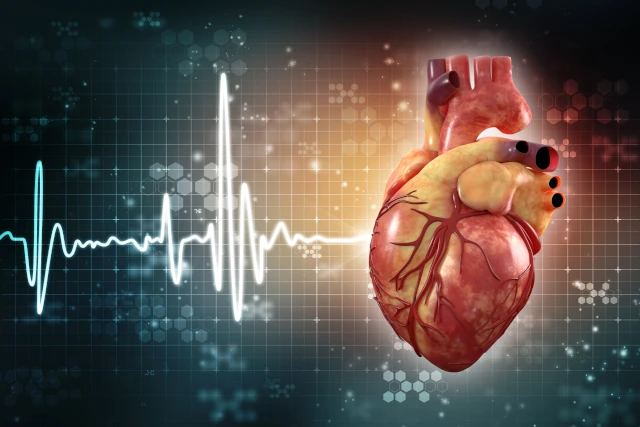
Importance of Physiotherapy Rehabilitation After Cardiac Surgery
- Dr. Deepika Rai (MPT)
Connect with our expert physiotherapist for personalized physiotherapy advice.
Introduction
Cardiac surgery can be a life-saving procedure, but the journey to full recovery doesn’t end in the operating room. Physiotherapy plays a vital role in helping patients regain strength, mobility, and overall health after cardiac surgery. This blog explores the importance of physiotherapy post-cardiac surgery, the benefits it offers, and what to expect during your rehabilitation process.
What is Physiotherapy After Cardiac Surgery?
Physiotherapy after cardiac surgery is a specialized rehabilitation program designed to help patients restore physical function, improve cardiovascular health, and enhance the quality of life. It involves a combination of exercises, breathing techniques, and education to ensure a safe and efficient recovery.
Benefits of Physiotherapy After Cardiac Surgery
- Improved Cardiovascular Function:
Regular exercise as part of physiotherapy helps in strengthening the heart muscles, improving circulation, and enhancing overall cardiovascular endurance.
- Reduced Risk of Complications:
Engaging in physiotherapy reduces the risk of common post-surgery complications, such as blood clots, pneumonia, and muscle atrophy.
- Enhanced Lung Function:
Breathing exercises included in physiotherapy help to improve lung capacity and oxygen intake, which is crucial for recovery.
- Faster Recovery:
Patients who engage in physiotherapy tend to recover more quickly and can return to their daily activities sooner than those who do not.
- Improved Mental Well-being:
Physical activity boosts mood and reduces the chances of post-surgery depression and anxiety.
Key Components of Post-Cardiac Surgery Physiotherapy
- Breathing Exercises
Breathing exercises are crucial for improving lung function and oxygen levels, which can be affected after surgery. Techniques such as deep breathing, incentive spirometry, and diaphragmatic breathing are often taught by physiotherapists.
- Gentle Range of Motion Exercises
Post-surgery, patients are encouraged to start with gentle range-of-motion exercises to maintain flexibility and reduce muscle stiffness. These exercises target the shoulders, neck, and upper body to prevent complications such as frozen shoulder.
- Gradual Aerobic Conditioning
Aerobic exercises are gradually introduced to improve cardiovascular health. Activities such as walking, cycling, and light treadmill workouts are effective in strengthening the heart.
- Strength Training
Strength training exercises help to rebuild muscle strength, particularly in the legs and upper body. These are essential as patients may have lost muscle tone due to prolonged inactivity during recovery.
- Posture and Balance Training
Posture correction and balance training are crucial to prevent falls and enhance the stability of patients as they resume daily activities.
What to Expect During Physiotherapy After Cardiac Surgery
Patients will initially have a detailed assessment with a physiotherapist, who will design a customized rehabilitation plan based on their medical history, surgery type, and recovery status. The program typically progresses from gentle exercises to more rigorous workouts, under constant monitoring to ensure safety.
- Phase 1: In-Hospital Recovery
The initial phase starts in the hospital, where the focus is on breathing exercises, gentle limb movements, and gradual mobilization. This helps in preventing complications and preparing the patient for discharge.
- Phase 2: Early Recovery at Home
After discharge, patients continue with a structured home program that includes light aerobic exercises, breathing techniques, and mobility training. Regular follow-ups with the physiotherapist ensure the program is being followed correctly.
- Phase 3: Long-Term Rehabilitation
This phase focuses on rebuilding strength, endurance, and overall fitness. The goal is to help patients return to their normal activities, work, and hobbies without any physical limitations.
Tips for a Successful Physiotherapy Program After Cardiac Surgery
- Start Early, But Go Slow:
Begin physiotherapy as recommended by your surgeon, but avoid pushing yourself too hard. Gradual progress is key.
- Follow Your Physiotherapist Instructions:
Each exercise is designed to improve specific aspects of recovery. Make sure you understand and follow the instructions carefully.
- Stay Consistent:
Consistency is essential for effective rehabilitation. Attend all sessions and practice the exercises at home as prescribed.
- Monitor Your Symptoms:
Always be attentive to your body. If you experience chest pain, dizziness, or shortness of breath during exercise, inform your physiotherapist or doctor immediately.
- Incorporate Lifestyle Changes:
Alongside physiotherapy, adopting a healthy diet, quitting smoking, and managing stress can significantly improve your recovery.
When to Seek Professional Help
It is essential to consult a healthcare provider if:
You experience shortness of breath, chest pain, or fatigue during or after exercises.
You have a history of chronic conditions like diabetes or high blood pressure, as this might require a more tailored rehabilitation plan.
You need guidance on transitioning to more vigorous physical activities post-rehabilitation.
Conclusion
Physiotherapy after cardiac surgery is not just about regaining physical strength; it is about achieving a better quality of life. With the right rehabilitation program, patients can make a faster, safer, and more complete recovery. If you or a loved one is scheduled for cardiac surgery, consider discussing the benefits of post-operative physiotherapy with your healthcare team.
Connect with our expert physiotherapist for personalized physiotherapy advice.



